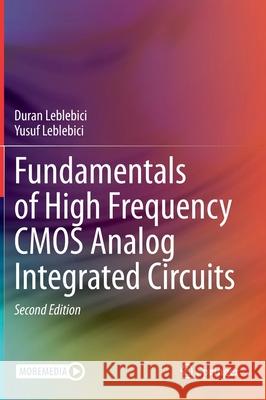Fundamentals of High Frequency CMOS Analog Integrated Circuits » książka
topmenu
Fundamentals of High Frequency CMOS Analog Integrated Circuits
ISBN-13: 9783030636579 / Angielski / Twarda / 2021 / 342 str.
Fundamentals of High Frequency CMOS Analog Integrated Circuits
ISBN-13: 9783030636579 / Angielski / Twarda / 2021 / 342 str.
cena 341,34
(netto: 325,09 VAT: 5%)
Najniższa cena z 30 dni: 327,68
(netto: 325,09 VAT: 5%)
Najniższa cena z 30 dni: 327,68
Termin realizacji zamówienia:
ok. 22 dni roboczych.
ok. 22 dni roboczych.
Darmowa dostawa!
Kategorie:
Kategorie BISAC:
Wydawca:
Springer
Język:
Angielski
ISBN-13:
9783030636579
Rok wydania:
2021
Wydanie:
2021
Ilość stron:
342
Waga:
0.85 kg
Wymiary:
25.4 x 17.78 x 2.24
Oprawa:
Twarda
Wolumenów:
01
Dodatkowe informacje:
Wydanie ilustrowane











